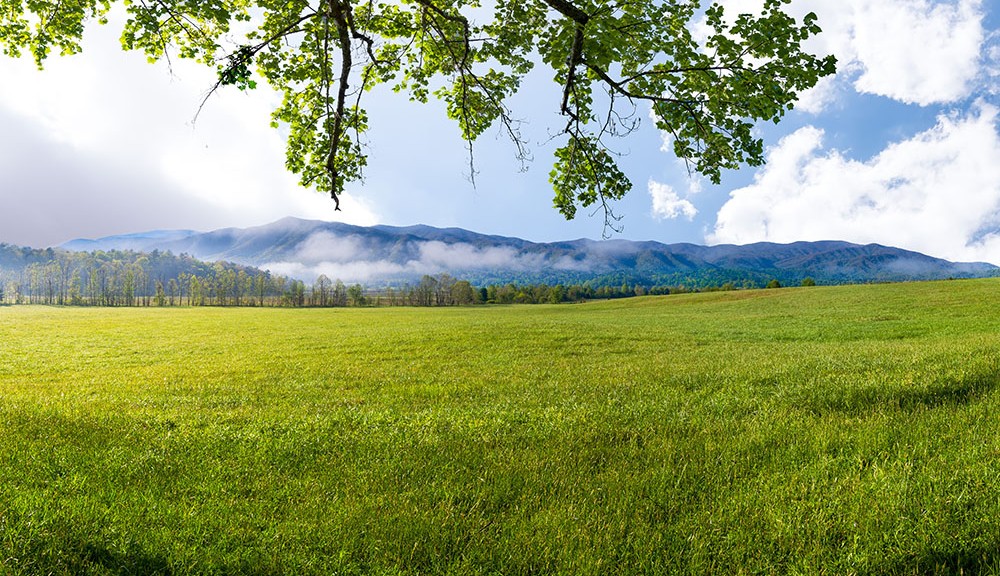
The Great Smoky Mountains National Park is Tennessee’s biggest landmark, attracting more than 9 million visitors each year. In fact, this national park has the highest visitation rate of any of the 59 national parks found in the U.S.
What makes the Smoky Mountains so popular? The park is easy to access, for one. Many visitors can make it to the Smokies in a relatively short drive, making easy weekend trips possible. The free entrance fee helps, too. In fact, this is one of the few national parks in the U.S. that does not charge an entrance fee.
But more than all of that, the Great Smoky Mountains are beautiful, diverse, and full of exciting ways to enjoy and explore the great outdoors. With more than 800 miles of trails, you can hike or bike in this national park while viewing a wide variety of wildlife, including the American black bear, more than 1,500 varieties of flowering plants, and more than 100 native tree species that grow in 5 different types of forests.
It hasn’t always been this way, though. Actually, had it not been for the early champions of the Great Smoky Mountains National Park—the men and women who went to great lengths to convince the Tennessee residents and state officials that turning the Smoky Mountains into a national park was a proposal worth investing in—those animals, wildflowers, native shrubs, and old-growth trees would likely not be around for us to enjoy today.
A Logger’s Paradise
The main reason the founding of the Great Smoky Mountains National Park was important was because it put an end to the devastation of the Smoky Mountains by industrial loggers in the 19th and early 20th centuries. The hundreds of acres of trees found within the Smoky Mountains made the area a natural paradise for loggers; however, by the mid-1920s, more than 300,000 of those acres had been stripped bare, turning the green landscape we know and love today into a wasteland.
A few important people began a campaign around this time to save the Smokies—people like David Chapman, who served as chairman of the Great Smoky Mountains Conversation Association; Ann Davis, who is credited for suggesting a national park in the Smokies after returning from a trip to several national parks out west in 1923; and Paul Fink, who is largely responsible for routing the Appalachian Trail through the Smoky Mountains.
Smoky Mountain Crusaders
But two of the most important names in the history of the Great Smoky Mountains National Park are Horace Kephart and George Masa. Kephart, an expert on early western explorations, moved to the Smokies in 1904 and eventually wrote a book about the natives of the region titled Our Southern Highlanders.
After spending time in the Smokies and coming to love the terrain, he became appalled at the devastation caused by loggers. He and Masa, a Japanese-born immigrant whose photographic eye fell in love with the beauty of the Smoky Mountains, started a promising crusade to save these beautiful mountains.
Masa used his photography of the Smokies to bolster support, and the people of Tennessee and North Carolina (the national park extends into North Carolina as well) rallied together to raise half of the money needed to purchase the park from the loggers.
Although they had raised $5 million—an astonishing sum of money at the time, especially when you consider that it had been collected from people living in one of the poorest sections of the country—they still had $5 million to go. That’s when well-known philanthropist John D. Rockefeller Jr. stepped in and paid the rest of the money needed to buy the land back from the timber companies and begin saving the centuries-old forests.
Leaving Home Behind
Loggers weren’t the only ones forced to leave once the Great Smoky Mountains National Park came to be. People living within the borders of the park—mostly white people and Cherokees—also had to relinquish their land and leave behind their homes. While many were willing to go, some families, like the Walker sisters, clung to their homesteads.
The Walker Sisters—6 women who had not married and whose father had died—were actually the only people allowed to maintain their mountain homestead within the borders of the national park until the final sister died in 1964. (There was a seventh sister who lived until 1966, but she did not live in the park.) After the founding of the national park, the women embraced their new lifestyle, greeting visitors and selling their homemade wares, including children’s toys, crocheted doilies, and fried apple pies to anyone who stopped by.
You can still visit the Walker homestead today by parking at Metcalf Bottoms and taking the Little Brier Gap Trail to their cabin. On the way, you’ll also see the Little Greenbrier schoolhouse, which their father, John Walker, and his son helped to build. These are just a few of the historic sites found within the national park and just one more reason to make the Great Smoky Mountains the next travel destination on your list!
